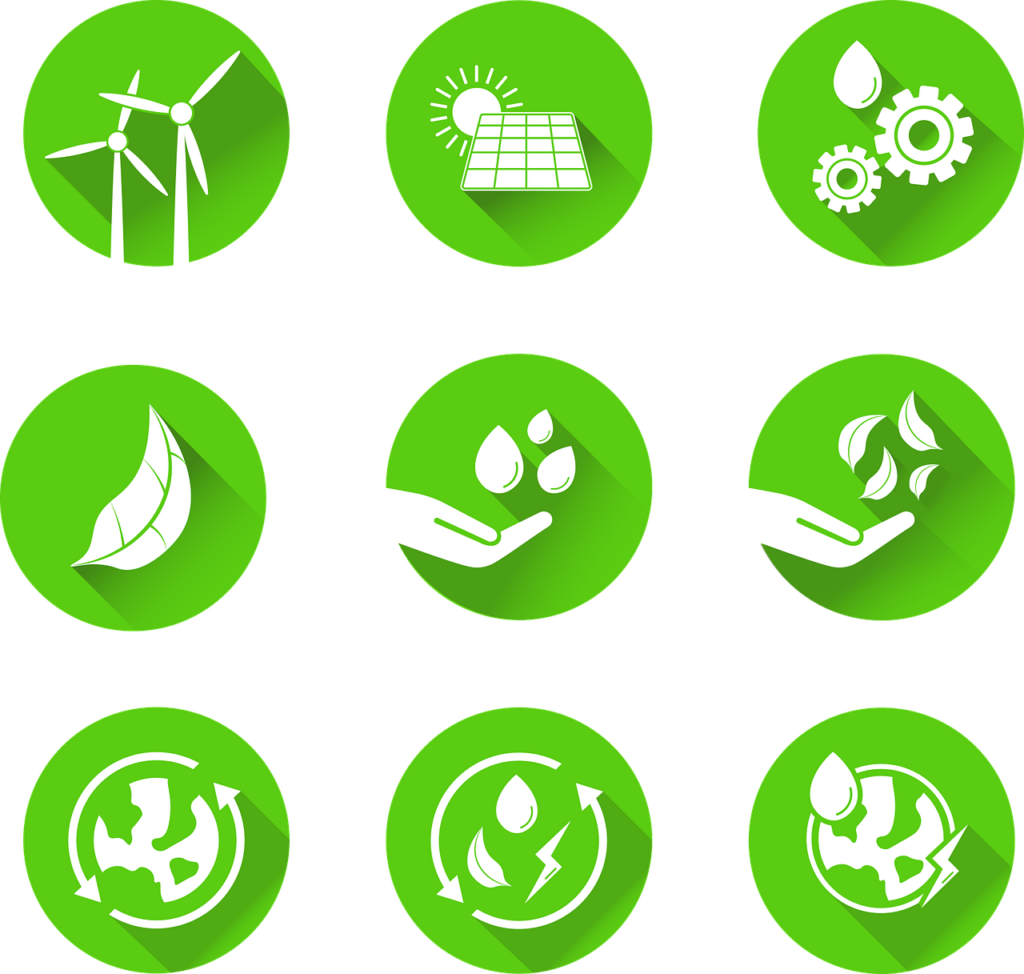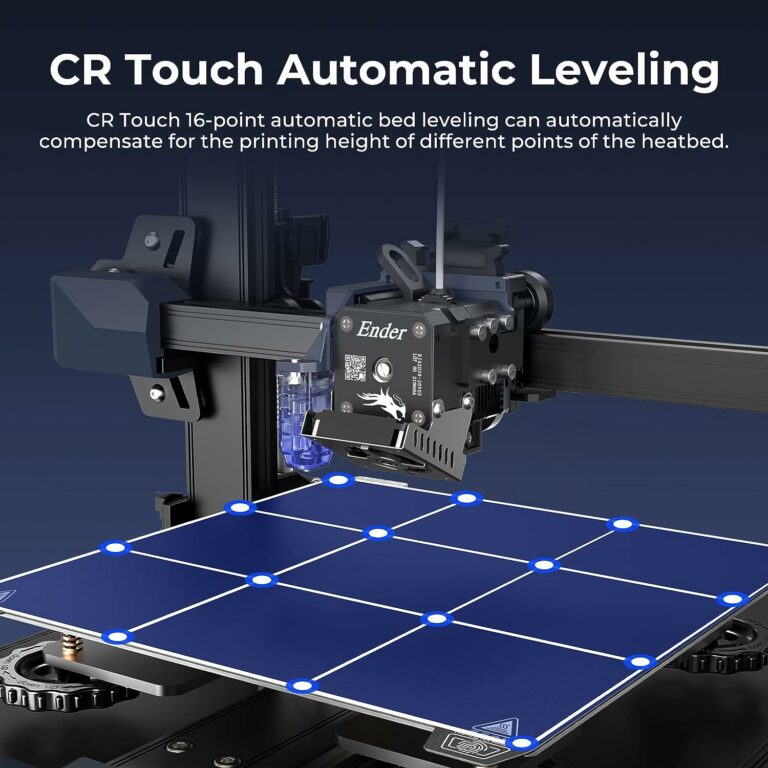In a world that is increasingly focused on sustainability, making eco-friendly choices has become more important than ever. This includes the tech industry, where the use of gadgets has become an integral part of our daily lives. From smartphones to laptops, we rely on these devices for communication, entertainment, and productivity. However, the production and disposal of these gadgets can have a significant impact on the environment. That’s why it’s crucial to consider eco-friendly options when it comes to choosing our tech gadgets. By opting for devices that are made from sustainable materials, have energy-efficient features, and can be easily recycled, we can contribute to a greener and more sustainable future. Welcome to the world of eco-friendly gadgets, where technology and sustainability go hand in hand.

1. Energy-efficient Gadgets
1.1 How to Identify Energy-efficient Gadgets
When it comes to making sustainable choices in tech, one of the key factors to consider is energy efficiency. Energy-efficient gadgets not only help reduce our carbon footprint but also save us money on our energy bills. But how can you identify energy-efficient gadgets? It’s actually quite simple. Look for devices that have earned an ENERGY STAR certification. This certification indicates that the gadget meets strict energy efficiency guidelines set by the Environmental Protection Agency (EPA). Additionally, you can also check if the gadget has the Energy Efficiency Label, which provides information on its energy consumption and efficiency rating.
1.2 Benefits of Energy-efficient Gadgets
Opting for energy-efficient gadgets offers numerous benefits, both for you and the environment. Firstly, these devices consume less energy, thereby reducing greenhouse gas emissions and helping combat climate change. Secondly, energy-efficient gadgets can save you money in the long run as they consume less electricity, resulting in lower energy bills. Additionally, these gadgets often come with advanced features and technologies that not only reduce energy consumption but also enhance performance and functionality. By choosing energy-efficient gadgets, you not only contribute to environmental sustainability but also enjoy the perks of cutting-edge technology.
1.3 Examples of Energy-efficient Gadgets
There is a wide range of energy-efficient gadgets available in the market today. Let’s take a look at a few examples across different categories:
- Energy-efficient smartphones: Many smartphone manufacturers are focusing on energy efficiency by optimizing their devices’ battery life and power management.
- Energy-saving laptops: Laptops with energy-saving features, such as low-power processors and efficient cooling systems, maximize battery life and reduce overall energy consumption.
- Smart thermostats: These devices help regulate and optimize your home’s heating and cooling systems, leading to significant energy savings.
- LED light bulbs: LED bulbs are highly energy-efficient, using up to 80% less energy than traditional incandescent bulbs while providing the same level of brightness.
- Energy-efficient appliances: From refrigerators to washing machines, energy-efficient appliances are designed to use less electricity without compromising on performance.
By choosing energy-efficient gadgets, you can make a positive impact on both the environment and your wallet.
2. Renewable Energy Sources
2.1 The Importance of Renewable Energy
Renewable energy plays a crucial role in the transition towards a more sustainable future. Unlike fossil fuels, renewable energy sources are naturally replenished and do not contribute to the depletion of finite resources or pollution. By harnessing the power of renewable energy, we can significantly reduce our dependence on non-renewable sources and mitigate the harmful effects of climate change. The use of renewable energy also promotes energy independence, stimulates economic growth, and creates job opportunities in the renewable energy sector.
2.2 Gadgets That Utilize Renewable Energy Sources
The tech industry has been quick to embrace renewable energy sources in the development of eco-friendly gadgets. Some of the gadgets that utilize renewable energy include:
- Solar-powered chargers: These portable chargers harness the energy from the sun, converting it into electricity to charge your devices on the go.
- Wind-powered gadgets: From small wind turbines to wind-powered phone chargers, these gadgets utilize wind energy to generate power.
- Hydro-powered gadgets: Devices that harness the power of flowing water, such as portable hydro turbines, allow you to charge your gadgets in remote locations where water sources are available.
2.3 Advantages of Choosing Gadgets Powered by Renewable Energy
Choosing gadgets powered by renewable energy sources offers several advantages. Firstly, it helps reduce reliance on fossil fuels and combat climate change. Secondly, using renewable energy to power gadgets can save money on electricity bills in the long run, as the power source is free and abundant. Additionally, renewable energy-powered gadgets provide a sustainable solution for off-grid use, allowing you to stay connected and powered up even in remote areas. By investing in these gadgets, you are not only making a personal commitment to sustainability but also supporting the growth of renewable energy technologies.
3. Sustainable Materials in Gadgets
3.1 Why Sustainable Materials Matter
The impact of gadgets on the environment extends beyond just their energy consumption. The materials used in their production can have significant environmental consequences. Sustainable materials matter because they help reduce resource depletion, minimize waste generation, and prevent pollution. By choosing gadgets made from sustainable materials, we can reduce our carbon footprint, promote circular economy principles, and encourage responsible manufacturing practices.
3.2 Popular Sustainable Materials Used in Gadgets
In recent years, there has been a growing trend in using sustainable materials in the production of gadgets. Some popular sustainable materials used include:
- Recycled plastics: Recycled plastics, made from post-consumer or post-industrial waste, help reduce the demand for virgin plastics and divert waste from landfills.
- Bamboo: Bamboo is a fast-growing and renewable resource that can be used as a sustainable alternative to wood in gadget manufacturing.
- Recycled metals: Using recycled metals, such as aluminum and copper, reduces the need for mining raw materials and decreases the energy required for extraction and processing.
- Bio-based plastics: Bio-based plastics are made from renewable resources, such as corn starch or sugarcane, and have a lower carbon footprint compared to traditional plastics.
3.3 Benefits of Using Gadgets Made from Sustainable Materials
Opting for gadgets made from sustainable materials offers several benefits. Firstly, it helps conserve natural resources by reducing the demand for virgin materials. Secondly, using sustainable materials promotes responsible waste management by diverting materials from landfills and encouraging recycling. Furthermore, gadgets made from sustainable materials are often more durable and long-lasting, reducing the need for frequent replacements and minimizing electronic waste. By supporting the use of sustainable materials in gadget manufacturing, you contribute to the preservation of natural resources, reduction of waste, and overall sustainability.
4. E-waste Management
4.1 Understanding E-waste and its Impact
Electronic waste, or e-waste, refers to discarded electronic devices that have reached the end of their useful life. Improper management of e-waste can have detrimental effects on the environment and human health. E-waste often contains hazardous substances like lead, mercury, and cadmium, which can seep into soil and water sources, causing pollution and posing health risks. It is estimated that globally, only a small percentage of e-waste is properly recycled, while the majority ends up in landfills or is illegally traded and dumped in developing countries.
4.2 Practices for Proper E-waste Disposal
Proper disposal and recycling of e-waste are essential for minimizing its environmental impact. Here are some practices for responsible e-waste management:
- E-waste recycling programs: Many countries and organizations have established e-waste recycling programs, where you can drop off your old devices for proper recycling and disposal.
- Certified e-waste recyclers: Look for certified e-waste recyclers who follow strict environmental and health standards to ensure responsible handling and recycling of electronic waste.
- Donations and trade-in programs: Consider donating your old gadgets to charities or participating in trade-in programs offered by manufacturers, which often provide incentives for returning old devices.
- Data wiping: Before disposing of your old gadgets, make sure to erase all personal data to protect your privacy.
4.3 Recycling and Upcycling Gadgets for a Greener Environment
Recycling and upcycling gadgets offer a sustainable solution for reducing e-waste and conserving valuable resources. Recycling involves extracting raw materials from old devices to produce new products. Upcycling, on the other hand, involves transforming old gadgets into new and innovative creations, extending their lifespan and reducing the need for new production. By participating in recycling and upcycling initiatives, you contribute to a greener environment, conserve resources, and prevent hazardous materials from entering landfills.

5. Green Packaging Solutions
5.1 The Problem with Traditional Packaging
Traditional packaging, often made from non-recyclable or non-biodegradable materials, contributes to the accumulation of waste in landfills and oceans. Additionally, the production of conventional packaging materials, such as plastic and styrofoam, involves the consumption of fossil fuels and the emission of greenhouse gases. This has negative implications for environmental sustainability and exacerbates the problem of plastic pollution.
5.2 Environmentally-friendly Packaging Alternatives
The tech industry is gradually shifting towards greener packaging solutions to reduce its environmental impact. Some environmentally-friendly packaging alternatives include:
- Recyclable packaging: Packaging materials that can be easily recycled, such as cardboard or paper, help minimize waste generation and support the recycling industry.
- Biodegradable packaging: Biodegradable materials, such as plant-based plastics or mushroom-based packaging, break down naturally, reducing their environmental footprint.
- Minimalist packaging: Adopting a minimalist approach to packaging involves using fewer materials, eliminating unnecessary packaging layers, and optimizing space, reducing waste and energy consumption.
5.3 Benefits of Choosing Gadgets with Green Packaging
Choosing gadgets with green packaging offers several benefits. Firstly, it reduces waste generation and supports the recycling or composting of packaging materials. By opting for recyclable or biodegradable packaging, you contribute to the circular economy and help prevent the accumulation of waste in landfills and oceans. Secondly, green packaging often comes with eco-friendly design features that prioritize space efficiency, reducing transportation costs and carbon emissions. By actively selecting gadgets with green packaging, you can make a positive impact on the environment and support sustainable packaging practices.
6. Power-saving Accessories
6.1 Innovative Power-saving Accessories
Power-saving accessories are designed to minimize energy consumption and optimize the efficiency of your gadgets. Here are some innovative power-saving accessories available in the market:
- Smart power strips: These power strips automatically detect when devices are in standby mode and cut off power to prevent energy vampire consumption.
- Energy-monitoring devices: Energy monitoring devices provide real-time information on energy usage, allowing you to identify high-consumption gadgets and make informed decisions to reduce energy waste.
- Solar-powered phone cases: These phone cases have built-in solar panels that harness solar energy to charge your phone, providing a renewable and portable charging solution.
6.2 How Power-saving Accessories Contribute to Sustainability
Power-saving accessories play a crucial role in promoting sustainability by reducing energy waste. By using these accessories, you can minimize the energy consumption of your gadgets, prolong their battery life, and reduce the overall demand for electricity. This not only helps lower greenhouse gas emissions but also translates into cost savings on energy bills. Power-saving accessories also raise awareness about energy usage patterns, encouraging users to adopt more sustainable habits and make conscious decisions about energy consumption.
6.3 Popular Power-saving Accessories on the Market
The market offers a wide range of power-saving accessories to cater to various devices and needs. Some popular power-saving accessories include:
- Smart thermostats: These devices enable you to control and optimize your home’s heating and cooling systems, resulting in significant energy savings.
- Energy-efficient LED bulbs: LED bulbs consume less electricity than traditional incandescent bulbs and have a longer lifespan, reducing energy waste and the need for frequent replacements.
- Battery packs and solar chargers: Portable battery packs and solar chargers provide renewable and on-the-go power solutions for smartphones and other mobile devices.
By embracing power-saving accessories, you can make a positive impact on the environment and reduce your ecological footprint.

7. Responsible Manufacturing Processes
7.1 The Role of Manufacturers in Sustainability
Manufacturers play a vital role in promoting sustainability through responsible manufacturing processes. By implementing eco-friendly practices, such as minimizing waste, reducing energy consumption, and using sustainable materials, manufacturers can contribute to environmental preservation and the overall well-being of the planet. Responsible manufacturing not only encompasses the production phase but also includes supply chain management, logistics, and end-of-life considerations.
7.2 Certifications and Standards for Eco-friendly Manufacturing
Various certifications and standards help identify manufacturers that prioritize eco-friendly manufacturing processes. Some notable certifications include:
- ISO 14001: This international standard outlines requirements for an effective environmental management system, ensuring that manufacturing processes comply with environmental regulations and focus on continuous improvement.
- Cradle to Cradle Certified: The Cradle to Cradle Certified program evaluates products and materials based on factors such as material health, recyclability, and renewable energy usage, promoting circular economy principles.
- EPEAT: The Electronic Product Environmental Assessment Tool (EPEAT) evaluates the environmental performance of electronic products, including energy consumption, materials selection, and end-of-life management.
7.3 Examples of Tech Companies Prioritizing Responsible Manufacturing
Several tech companies have taken a proactive approach to responsible manufacturing and adopted sustainable practices throughout their operations. Some examples include:
- Apple: Apple has prioritized responsible manufacturing by committing to 100% renewable energy usage in its global operations and working towards a closed-loop supply chain to minimize waste and carbon emissions.
- Dell: Dell has implemented resource-efficient manufacturing processes, reduced greenhouse gas emissions, and established a comprehensive recycling program for end-of-life products.
- HP: HP focuses on sustainable procurement, energy-efficient manufacturing processes, and responsible recycling, aiming to achieve a circular economy for its products and materials.
By supporting tech companies that prioritize responsible manufacturing, you contribute to a more sustainable industry and encourage positive change.
8. Energy-efficient Home Automation
8.1 Integrating Eco-friendly Gadgets into Home Automation Systems
Home automation systems offer a convenient and efficient way to manage and control various aspects of your home, including lighting, heating, cooling, and security. By integrating eco-friendly gadgets into your home automation system, you can further enhance its energy efficiency and sustainability. For example, smart thermostats can automatically optimize temperature settings based on occupancy and weather conditions, reducing energy waste. Furthermore, smart lighting systems can adjust brightness levels and schedule lighting to ensure efficient use of electricity.
8.2 Features and Benefits of Energy-efficient Home Automation
Energy-efficient home automation systems offer numerous features and benefits for homeowners. These include:
- Energy monitoring and management: Home automation systems can provide real-time energy consumption data and allow you to remotely control and manage energy usage, leading to increased awareness and informed decision-making.
- Optimized HVAC systems: Smart thermostats and HVAC zoning systems in home automation can help regulate temperature settings and reduce energy consumption, resulting in significant cost savings and environmental benefits.
- Lighting control: Smart lighting systems allow you to adjust brightness levels, schedule lighting, and detect occupancy, ensuring efficient use of electricity and reducing unnecessary energy waste.
- Seamless integration: Energy-efficient home automation systems can seamlessly integrate various smart devices and sensors, enabling efficient communication and coordination, ultimately maximizing energy savings.
8.3 Examples of Eco-friendly Home Automation Gadgets
There are numerous eco-friendly home automation gadgets available in the market today. Here are a few examples:
- Smart thermostats: Brands like Nest and ecobee offer energy-efficient thermostats that learn your schedule, preferences, and occupancy patterns to optimize energy consumption.
- Smart lighting systems: Companies like Philips Hue and Lutron offer energy-efficient smart lighting solutions that provide versatile control, adjustable brightness, and automation features to minimize energy waste.
- Smart power outlets: Energy-efficient smart power outlets enable remote control, scheduling, and energy monitoring of connected devices, allowing you to minimize standby power consumption.
By integrating eco-friendly home automation gadgets into your living space, you can create a more energy-efficient and sustainable home environment.
9. Smart Transportation Solutions
9.1 Sustainable Transportation and Tech Gadgets
Transportation is a major contributor to greenhouse gas emissions and air pollution. However, tech gadgets can play a role in promoting sustainable transportation options. From electric vehicles to smart navigation systems, these gadgets can help reduce our carbon footprint and make commuting and traveling more eco-friendly.
9.2 Green Alternatives for Commuting and Traveling
Several green alternatives for commuting and traveling have emerged with the help of tech gadgets. These include:
- Electric vehicles (EVs): EVs are powered by electricity, eliminating tailpipe emissions and reducing dependence on fossil fuels. The adoption of EVs is supported by advancements in battery technology and the development of charging infrastructure.
- Bike-sharing and scooter-sharing apps: Tech-enabled bike-sharing and scooter-sharing apps provide convenient and sustainable alternatives for urban commuting, reducing the reliance on private vehicles.
- Carpooling and ride-sharing platforms: Carpooling and ride-sharing platforms connect drivers and passengers heading in the same direction, promoting carpooling as a sustainable transportation option.
- Public transportation apps: Apps that provide real-time information on public transportation schedules, routes, and fares help individuals make informed decisions about using public transportation, reducing the reliance on private vehicles.
9.3 Benefits of Using Smart Transportation Gadgets
Using smart transportation gadgets offers numerous benefits, both for individuals and the environment. These benefits include:
- Reduced carbon emissions: By opting for electric vehicles or sustainable transportation alternatives, you actively reduce greenhouse gas emissions, contributing to climate change mitigation.
- Cost savings: Sustainable transportation gadgets, such as EVs or ride-sharing platforms, can lead to significant cost savings on fuel, maintenance, and parking fees.
- Reduced traffic congestion: Carpooling and ride-sharing solutions help reduce the number of vehicles on the road, easing traffic congestion, and improving overall transportation efficiency.
- Health benefits: Sustainable transportation options, such as walking, biking, or using public transportation, promote physical activity and reduce air pollution, resulting in improved health and well-being.
By embracing smart transportation gadgets, you can make your commuting and traveling more sustainable and contribute to a cleaner and healthier environment.
10. Responsible Tech Consumption
10.1 The Need for Responsible Tech Consumption
Responsible tech consumption refers to making informed choices as a consumer that prioritize sustainability and ethical considerations. With the rapid advancements and proliferation of technology, it is essential to be mindful of the environmental and social impact of the devices we use. Responsible tech consumption involves considering factors such as energy efficiency, sustainable materials, e-waste management, and ethical manufacturing practices.
10.2 Tips for Making Sustainable Choices as a Consumer
As a consumer, you have the power to drive change and influence sustainable practices in the tech industry. Here are some tips for making responsible tech consumption choices:
- Research the environmental impact: Before purchasing a gadget, research its energy efficiency, recyclability, and the environmental policies of the manufacturer.
- Choose repairable and upgradeable devices: Opt for gadgets that can be easily repaired or upgraded, extending their lifespan and reducing e-waste.
- Consider second-hand or refurbished options: Buying second-hand or refurbished gadgets reduces the demand for new devices, conserves resources, and prevents e-waste generation.
- Support sustainable brands: Look for tech brands that prioritize sustainability, including energy efficiency, responsible manufacturing, and the use of sustainable materials.
10.3 Impact of Responsible Tech Consumption on the Environment
Responsible tech consumption has a positive impact on the environment and society as a whole. By supporting sustainable tech practices, you contribute to:
- Reduction in greenhouse gas emissions: Energy-efficient gadgets and sustainable manufacturing processes help reduce carbon emissions and combat climate change.
- Conservation of resources: Opting for gadgets made from sustainable materials and engaging in e-waste recycling minimizes resource depletion and promotes a circular economy.
- Prevention of e-waste pollution: Responsible e-waste disposal and recycling prevent hazardous materials from polluting the environment and endangering human health.
- Demand for sustainability: Consumer demand for sustainable tech products and practices drives innovation towards more eco-friendly solutions.
By being a responsible tech consumer, you can make a tangible difference in creating a more sustainable and environmentally conscious future.
In conclusion, making sustainable choices in the tech industry is crucial for mitigating climate change, conserving resources, and promoting a greener future. By opting for energy-efficient gadgets, utilizing renewable energy sources, embracing sustainable materials, managing e-waste responsibly, choosing green packaging solutions, utilizing power-saving accessories, supporting responsible manufacturing processes, adopting energy-efficient home automation, utilizing smart transportation gadgets, and engaging in responsible tech consumption, you can contribute to a more sustainable and eco-friendly world. Let’s embrace the power of technology and use it as a force for positive change.



